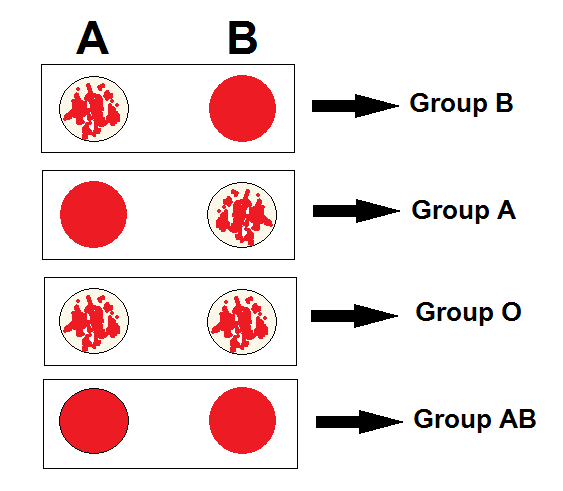The ABO blood grouping is divided into two methods such as Forward grouping/Cell grouping and Reverse grouping/Serum grouping. In Forward grouping/Cell grouping, the Red blood cells are examined for A and B antigens utilizing known anti-A and anti-B sera. While in Reverse grouping/Serum grouping, the Serum is examined for anti-A and anti-B antibodies by using known A and B red cells.
Contents
Reverse Blood Grouping
Reverse grouping is defined as using the reagent cells with known ABO antigens and testing the patient’s serum for ABO group antibodies.
- It is a type of laboratory technique used to confirm ABO blood group based on the presence or absence of anti-A and anti-B in serum by utilizing known A and B red cells.
- This test is performed along with forward grouping to check the accuracy.
- The reverse Blood Grouping test is not applicable for infants below 4 months of age, because of the absence of synthesized immunoglobulins, anti-A and Anti-B in newborns and very young infants.
Aim
To check the accuracy of the Forward Blood Grouping test.
Reverse Blood Grouping Principle
The reverse blood grouping procedure is based on the principle of direct hemagglutination. The erythrocytes of a person contain blood group antigens on the surface of the membrane. When these antigens are allowed to be treated with corresponding antibodies, antigen-antibody reactions occur and form agglutination.
Requirements for Reverse Blood Grouping
- Serum from the patient.
- Group A and group B red cell Suspension.
Preparation of Cell Suspension
Most of the laboratories prepare their own A and B test red cells from persons known to be group A and group B. Make pooled cell suspension as follows:
- Take two test tubes and label them as A and B.
- Then in Tube A, Place 1 drop of red cells each from 3 of A group samples and in Tube B place 1 drop of red cells each from 3 of B group samples.
- Add normal saline to the tubes to suspend the cells.
- Centrifuge them for at least 1 minute at 1000 rpm.
- Prepare 5% red cell suspension by adding 1 drop of RBC to 19 drops of saline. And also prepare 20% suspension for the slide method.
- Test the prepared pooled cells by adding the antisera (Anti-A, B) in use.
Procedure
There are present two methods for Reverse Blood Grouping test such as; Tube Method and Slide Method.
Tube Method
- Take two test tubes and label them as A and B.
- Add 2 drops of the Patient’s serum to each test tube.
- Add 1 drop of each of A and B cells suspension to the corresponding test tubes.
- Mix well and then centrifuge them at 1000 rpm for 1 minute.
- After centrifugation completely resuspends the cells.
- Examine the tubes macroscopically for the positive and negative results.
Slide Method
- Take a clean slide and divide it into two halves by usign a marker. Label the left side as A and the right side as B.
- Add one drop of the patient’s serum on both sides of the slide.
- Add one drop each of A and B cells suspension (20%) to the corresponding sides.
- Take a sterile Toothpick/inoculum loop to mix the serum and cell suspension on both sides separately and spread into a smooth round circle.
- Keep the slides in steady condition for 2 minutes.
- After 2 minutes observe the slides for agglutination.
Results and Interpretation
- Blood group A: If agglutination occurs with B cells only.
- Blood group B: If agglutination occurs with A cells only.
- Blood group AB: If agglutination does not occur with both A and B cells.
- Blood group O: If agglutination occurs with both A and B cells.

Limitations
- The Serum collected from the patients with agammaglobulinemia should not contain detectable ABO antibodies.
- This method is not suitable for newborns and infants, because they lack anti-A and anti-B, which is only formed 3-4 months after birth.











